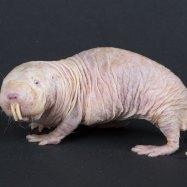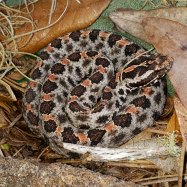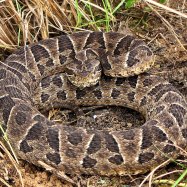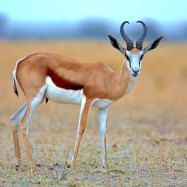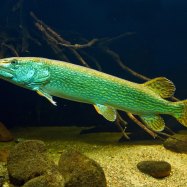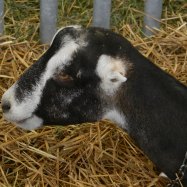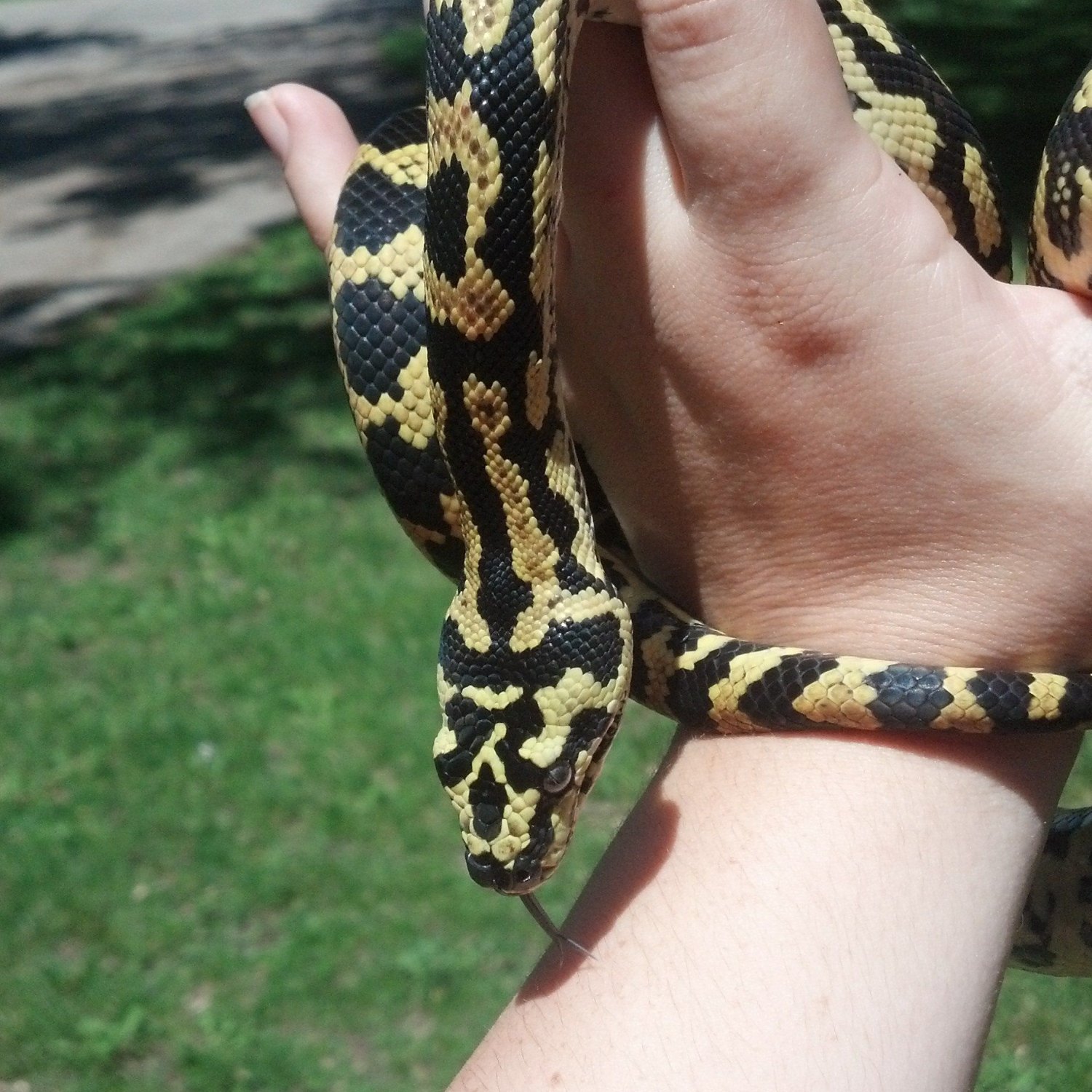
Jungle Carpet Python
Average length is 6 - 9 feet (1.8 - 2.7 meters)
The Jungle Carpet Python, native to Northern Queensland and Papua New Guinea, is a stunning serpent with an average length of 6-9 feet. As part of the Pythonidae family, this slender and elongated creature is a popular pet among reptile enthusiasts due to their striking color patterns and easy maintenance. #JungleCarpetPython #reptiles #petcare
Animal Details Summary:
Common Name: Jungle Carpet Python
Kingdom: Animalia
Habitat: Tropical rainforests
The Alluring Jungle Carpet Python: A Magnificent Creature of the Australian Rainforests
The tropical rainforests of Australia are home to an array of magnificent creatures, and one that stands out in both beauty and uniqueness is the Jungle Carpet Python. Scientifically known as Morelia spilota cheynei, this stunning reptile is a sub-species of the Carpet Python family and is endemic to Australia.Highly coveted by reptile collectors and enthusiasts, the Jungle Carpet Python is a creature that never fails to amaze with its striking appearance and intriguing behavior. In this article, we will take a closer look at the fascinating features and characteristics of this incredible species Jungle Carpet Python.
The Taxonomy of the Jungle Carpet Python
Before we delve into the intriguing facts about the Jungle Carpet Python, let's first understand its taxonomy. Taxonomy is the science of categorizing and classifying organisms based on their characteristics and evolutionary relationships. The Jungle Carpet Python belongs to the following taxonomic hierarchy:- Kingdom: Animalia
- Phylum: Chordata
- Class: Reptilia
- Order: Squamata
- Family: Pythonidae
Habitat and Distribution
As its name suggests, the Jungle Carpet Python is predominantly found in the lush tropical rainforests of Australia. It is a semi-arboreal species and can be found in trees, among leaf litter, and even in human settlements. They are also known to be excellent climbers and can move effortlessly through the branches of trees.This species is native to northern Queensland and Papua New Guinea, but they have also been introduced to several other parts of Australia. However, their population remains highly localized due to their specific habitat requirements.
Feeding Behavior and Diet
The Jungle Carpet Pythons are carnivorous creatures and have a diverse diet that includes small mammals, birds, and reptiles. They have a unique feeding behavior where they ambush their prey by staying still and striking them with their sharp fangs Jackal. These pythons are also constrictors, which means they wrap around their prey and squeeze until their prey stops breathing.One of the most interesting aspects of their feeding behavior is their ability to consume prey much larger than themselves. They can stretch their amazingly flexible jaws to swallow large creatures, making them one of the top predators in their habitat.
Physical Characteristics
The Jungle Carpet Python is a visually stunning creature. Their body coloration varies greatly, from yellow and cream to dark brown and olive backgrounds, with dark blotches or stripes running down their body. This unique pattern helps them camouflage perfectly in their environment.They have a slender and elongated body shape, with a relatively short and pointed head. Their eyes are large and round, enhancing their keen sense of vision, which they heavily rely on while hunting prey.
Size and Growth
The average length of an adult Jungle Carpet Python is 6 - 9 feet (1.8 - 2.7 meters), with females being slightly longer and heavier than males. However, some individuals have been recorded to grow up to 13 feet (3.9 meters) in length.Like most reptiles, they continue to grow throughout their lives, albeit at a slower pace as they age. It takes them around 3-4 years to reach their full size, and they can live up to 20 years in captivity.
Behavior and Temperament
The Jungle Carpet Python is generally a solitary and non-aggressive species. They are nocturnal, meaning they are most active at night, but may also bask in the sun during the day. They have been observed to be calm and docile when handled properly, but they can become defensive if they feel threatened.When threatened, these pythons will coil up in a defensive position, hiss loudly, and strike if they feel the need to defend themselves. However, they are not venomous, and their bites are harmless to humans, so there is no reason to fear them.
Captivity and Conservation Status
The Jungle Carpet Pythons are a highly sought-after species in the reptile trade, and their populations in the wild are declining due to habitat destruction and illegal collection. They are classified as a vulnerable species by the International Union for Conservation of Nature (IUCN) and are protected by law in Australia.However, captive breeding efforts have helped to alleviate the pressure on the wild population. These pythons make stunning pets, but they require specialized care and a significant time commitment. Before considering keeping one as a pet, it is crucial to research and understand their needs and requirements.
Conclusion
The Jungle Carpet Python is undoubtedly one of the most spectacular creatures of the Australian rainforests. With its striking appearance, unique hunting techniques, and docile nature, this reptile is truly a sight to behold.However, as with any animal, it is crucial to respect their natural habitat and seek out ethical ways of obtaining them as pets. Conservation efforts and responsible pet ownership are essential to ensure the survival of this stunning species for generations to come.

Jungle Carpet Python
Animal Details Jungle Carpet Python - Scientific Name: Morelia spilota cheynei
- Category: Animals J
- Scientific Name: Morelia spilota cheynei
- Common Name: Jungle Carpet Python
- Kingdom: Animalia
- Phylum: Chordata
- Class: Reptilia
- Order: Squamata
- Family: Pythonidae
- Habitat: Tropical rainforests
- Feeding Method: Carnivorous
- Geographical Distribution: Australia
- Country of Origin: Australia
- Location: Northern Queensland and Papua New Guinea
- Animal Coloration: Varies, often with brown or olive background and dark blotches
- Body Shape: Slender and elongated
- Length: Average length is 6 - 9 feet (1.8 - 2.7 meters)
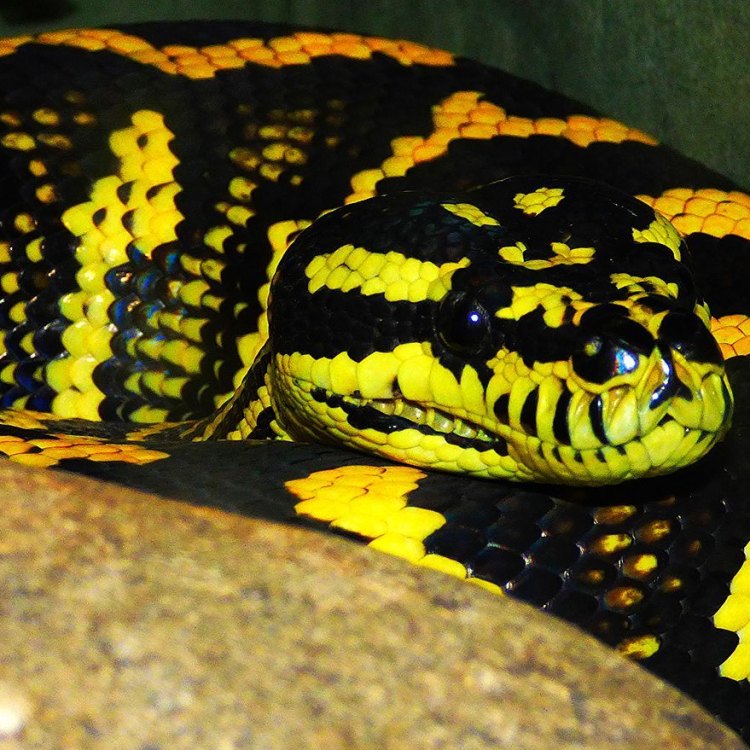
Jungle Carpet Python
- Adult Size: Can grow up to 10 feet (3 meters)
- Average Lifespan: 15 - 20 years in the wild
- Reproduction: Oviparous
- Reproductive Behavior: Females lay eggs
- Sound or Call: Hisses and occasional vocalizations
- Migration Pattern: Non-migratory
- Social Groups: Solitary
- Behavior: Nocturnal and arboreal
- Threats: Habitat loss and illegal pet trade
- Conservation Status: Not Evaluated (NE)
- Impact on Ecosystem: Predator
- Human Use: Commonly kept as pets
- Distinctive Features: Patterned scales and ability to change color
- Interesting Facts: Due to their attractive appearance, Jungle Carpet Pythons are highly sought after in the pet trade.
- Predator: Humans, large birds, and crocodiles
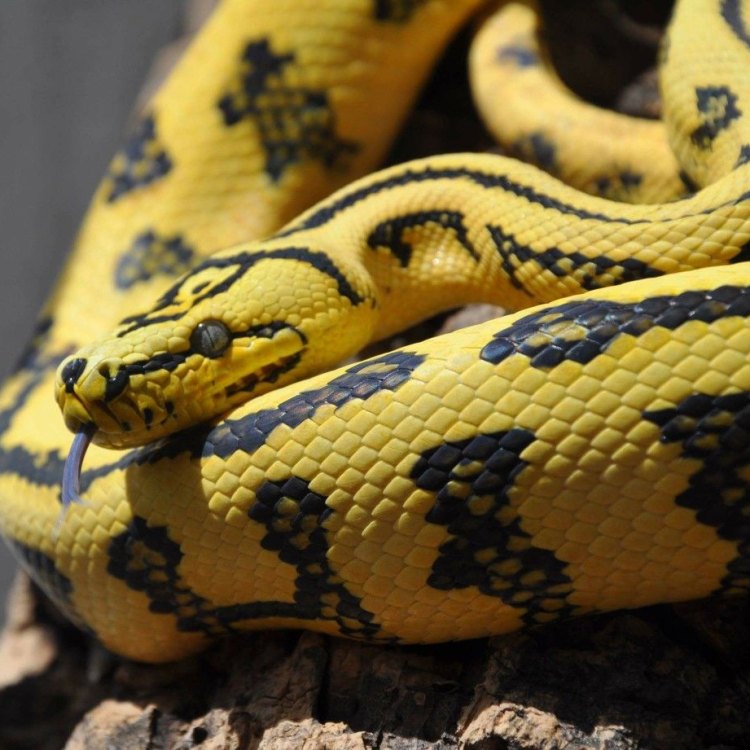
Morelia spilota cheynei
The Enigmatic Features of the Jungle Carpet Python: Facts and Discoveries
Deep in the heart of the dense, lush rainforests of Australia, an enigmatic and elusive creature resides. With its striking patterns and elusive nature, the Jungle Carpet Python has captured the awe and curiosity of naturalists and pet enthusiasts alike. Its unique features, behavior, and impact on the ecosystem make it a fascinating species to study and understand. In this article, we will delve into the world of the Jungle Carpet Python, uncovering its distinctive features, interesting facts, and its role in the ecosystem PeaceOfAnimals.Com.The Jungle Carpet Python (Morelia spilota cheynei) is a non-venomous snake species that is native to the tropical regions of Australia. They are the largest subspecies of the Carpet Python family, with adults growing up to 10 feet (3 meters) in length. These magnificent creatures have a distinctive appearance, with a patterned design of dark brown or black scales on a golden-orange or pale yellow background.
Unlike other python species, Jungle Carpet Pythons do not have heat-sensing pits on their faces. Instead, they rely on their sense of smell and excellent eyesight to hunt and navigate through their environment. With their nocturnal and solitary behavior, these snakes can be elusive and challenging to observe in their natural habitat.
One of the most intriguing aspects of the Jungle Carpet Python is its ability to change color. Like other reptiles, their coloration can vary depending on factors such as temperature, mood, and lighting. This unique feature adds to their already mesmerizing appearance and makes them a popular choice for snake enthusiasts and beginners in the pet trade Jumping Spider.
Despite their popularity in the pet trade, Jungle Carpet Pythons are not extensively studied or evaluated in the wild. As a result, their conservation status is currently listed as "Not Evaluated" (NE) by the International Union for Conservation of Nature (IUCN). This lack of information and research on the species highlights the urgent need for further studies to understand and protect these magnificent creatures.
Let's dive deeper into the distinctive features and behavior of the Jungle Carpet Python.
The Birth of New Life: Oviparous Reproduction
The reproductive behavior of Jungle Carpet Pythons is fascinating and unique. The females are oviparous, meaning they lay eggs. They typically lay between 10 to 30 eggs in a clutch, which they incubate for around 60 days before hatching. Unlike other reptiles, female Jungle Carpet Pythons do not stay with their eggs to protect them. Instead, they rely on camouflage and conceal their eggs in natural debris or crevices.
Once the eggs hatch, the newly hatched pythons are around 18 inches long and are independent from birth. They are immediately ready to hunt and begin their journey in the wild. This method of reproduction, although successful for the species, puts them at risk for predation as the eggs are vulnerable and unguarded.
The Hidden Sounds of the Jungle: Hisses and Vocalizations
While Jungle Carpet Pythons are generally solitary creatures, they do make sounds on occasion. Like most snakes, they communicate through hisses, which they use as a warning signal when they feel threatened. This hissing sound is created by the air escaping through the snake's mouth as it opens and closes it rapidly.
In addition to hissing, Jungle Carpet Pythons have also been known to make occasional vocalizations. These vocalizations are believed to be a form of communication between individuals or for mating purposes. These hidden sounds of the jungle are an essential aspect of the snake's communication and behavior, highlighting their unique and intriguing nature.
A Solitary Life in the Trees: Nocturnal and Arboreal Behavior
Jungle Carpet Pythons are nocturnal and arboreal, meaning they are most active at night and prefer to spend their time in trees. They are excellent climbers and have specialized scales on their belly known as "ventral scales," which help them grip onto branches and move effortlessly through the trees.
With their excellent camouflage and arboreal behavior, it can be challenging to spot these snakes in the wild. They spend most of their time hidden in foliage, waiting for their prey to come within striking distance. Their solitary nature and preferred habitat make them elusive and challenging to study in their natural environment.
Threats to the Jungle Carpet Python: Habitat Loss and Illegal Pet Trade
Like many other species, Jungle Carpet Pythons are facing threats from habitat destruction and the illegal pet trade. With urbanization, the destruction of their natural habitat is becoming a severe concern for the species. The clearing of rainforests and conversion into agricultural land has significantly reduced their range and population in the wild.
Furthermore, the attractive appearance and docile nature of Jungle Carpet Pythons make them highly sought after in the pet trade. However, capturing and smuggling these wild animals for the pet trade is not only harmful to the individual snakes but also contributes to their declining population in the wild. The illegal pet trade is a significant threat to the survival of Jungle Carpet Pythons and highlights the need for stricter enforcement and regulations to protect these magnificent creatures.
The Impact of the Jungle Carpet Python on the Ecosystem
As apex predators, Jungle Carpet Pythons play a crucial role in maintaining the balance of the ecosystem. Their voracious appetite and ability to consume prey that may otherwise become overpopulated help regulate the population of smaller animals in the rainforest. As predators, they also control the populations of other species, preventing overgrazing and preserving the delicate balance of the ecosystem.
Furthermore, as they are nocturnal and arboreal, Jungle Carpet Pythons also aid in seed dispersal. As they move through the trees, they may inadvertently carry seeds from one location to another, helping to spread plant life and promoting biodiversity in the rainforest.
A Fascination for the Human Eye: Common as Pets
The strikingly beautiful appearance of Jungle Carpet Pythons has made them a popular choice for snake enthusiasts and pet owners. Their manageable size and docile nature also make them suitable for beginners in the pet trade. However, it is essential to remember that these are wild animals and require specialized care and environment to thrive in captivity.
Their nocturnal behavior and solitary nature can make them challenging to care for, and they require a spacious enclosure to mimic their natural habitat. It is also essential to ensure that the snakes are obtained from ethical sources and not contributing to the illegal pet trade, which can harm the species' population in the wild.
Interesting Facts: The Hidden Mysteries of the Jungle Carpet Python
As we have explored, the Jungle Carpet Python is a fascinating and secretive species. Here are some interesting facts about this elusive creature that you may not have known:
- Due to their attractive appearance, Jungle Carpet Pythons are highly sought after in the pet trade, making them vulnerable to being poached from the wild.
- Jungle Carpet Pythons have been known to be cannibalistic, with larger individuals consuming smaller ones. This behavior helps regulate the population of the species in the wild.
- With their ability to change color, Jungle Carpet Pythons can camouflage themselves to avoid detection from predators and prey.
- Jungle Carpet Pythons are known to live up to 20 years in the wild, making them a long-lived species.
- These snakes are opportunistic hunters and can consume a wide variety of prey, including small mammals, birds, and reptiles.
A Threatening Predator: Humans, Birds, and Crocodiles
Unfortunately, like many other species, the Jungle Carpet Python faces threats from predators. In their natural habitat, they may fall prey to larger birds, such as eagles and owls, or to crocodiles near water sources. However, the most significant threat to their survival comes from humans.
Habitat destruction, illegal pet trade, and deliberate killing of these snakes due to fear and misunderstanding contribute to their declining population in the wild. It is essential to raise awareness and educate others about the importance of protecting these magnificent creatures and their habitat.
The Hidden Mysteries of the Jungle Carpet Python: An Ongoing Discovery
Despite being a commonly kept pet and a well-known python species, the Jungle Carpet Python still holds many hidden mysteries and secrets waiting to be discovered. As we continue to learn more about this species, we can better understand and protect them in the wild.
Their behavior, natural history, and role in the ecosystem make Jungle Carpet Pythons a unique and fascinating species. However, they must be protected and conserved to ensure their survival in the wild. So the next time you come across this magnificent creature in the dense jungles, take a moment to appreciate its beauty and the essential role it plays in maintaining the delicate balance of the ecosystem.

The Alluring Jungle Carpet Python: A Magnificent Creature of the Australian Rainforests
Disclaimer: The content provided is for informational purposes only. We cannot guarantee the accuracy of the information on this page 100%. All information provided here may change without prior notice.




